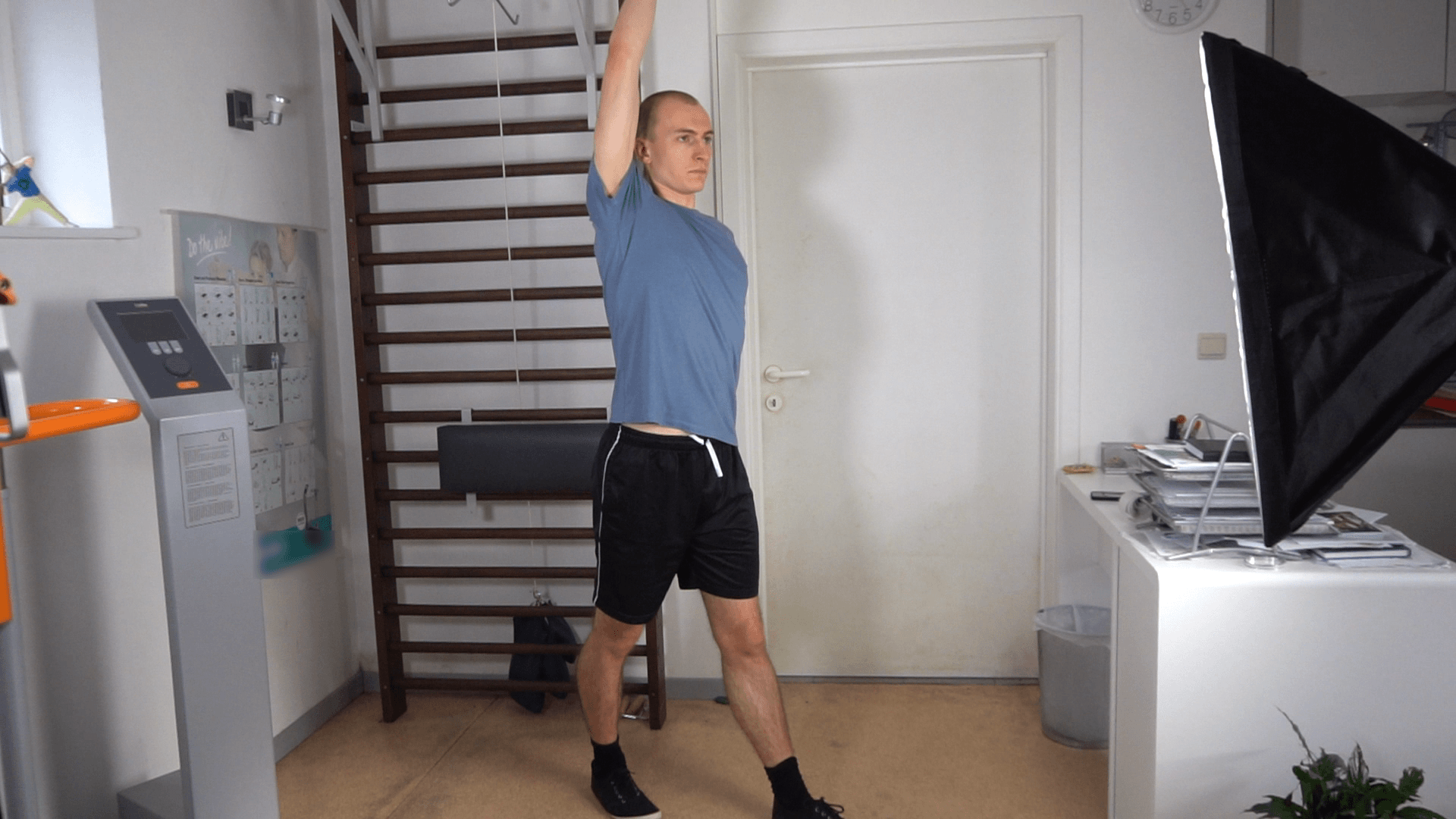Modifying exercises can keep things interesting and focus on different areas. Discover how to do skier jacks and what the benefits are.
Skier jacks are a jumping jack variation where you raise your arms forward and your legs forward and back.
The result is that you focus more on the front part of the deltoids (main shoulder muscle), hip flexors, glutes (butt), and hamstring muscles than regular jumping jacks.
On the other hand, skier jacks also work the middle part of the deltoids, inner thigh muscles, and outer thigh muscles to a lesser extent than the regular version.
These muscle engagement differences are mostly relevant for endurance improvements.
Skier jacks are still mostly a cardiovascular, coordination, and warm-up exercise.
If you like doing skier jacks, they can be a good choice for these purposes.
At the same time, you want to know that there are more effective exercise alternatives too.
How to do a skier jack
Take the following steps to do a skier jack:
- Stand upright with one arm pointing up. Let your other arm hang by your side for now. Put the foot opposite of the upward arm slightly forward and the other foot slightly backward.
- Jump up and while in the air, move your front leg backward, your back leg forward, the arm that is pointing up down, and the arm by your side forward and upward.
- Land in the same starting position but with your other arm up and your other leg forward. Most people will prefer landing with slightly less than stretched legs in terms of comfort.
- Jump up and repeat the same movements from steps 2 and 3.

You preferably want to have the foot on the side opposite of the upward arm forward. This will help with moving in a stable manner.
It is also possible to do skier jacks by not taking this tip into account but this will generally not feel as smooth.
Especially at higher speeds which are where you typically get most of the cardiovascular benefits.
Another way to challenge your cardiovascular system (and leg muscles) more is wearing a weighted vest.
Skier jacks muscles worked
The main muscles you work with skier jacks are your hip flexors, glutes (butt), hamstrings (back thighs), front deltoids (shoulders), latissimus dorsi (middle/upper back), quadriceps, calves, and to some extent core muscles.
If you are familiar with the muscles jumping jacks work, you will notice that skier jacks focus more on your front deltoids, hip flexors, glutes, and hamstrings.
On the other hand, skier jacks also work your middle deltoids, hip abductors (outer thighs), and hip adductors (inner thighs) to a lesser extent.
These differences are not necessarily better or worse. In what areas you want to have the biggest chances of muscle endurance improvements will influence your preference.
Additionally, keep in mind that you should not really expect any muscle growth in all of these areas. To achieve this, you will have to turn to exercises that are more challenging.
Skier jacks benefits
While the muscle engagement is slightly different, the overall positive effects of skier jacks will still be very similar to the benefits of regular jumping jacks. A few of these are:
- Can improve cardiovascular health: Skier jacks will require your heart, lungs, and blood vessels to work harder. If you do them intensely enough (but not too intense), this can lead to a healthier cardiovascular system.
- Muscle endurance: The muscle engagement in skier jacks will likely not lead to growth but you could still see endurance improvements in certain areas.
- Improves mood: Exercises like skier jacks tend to increase to what extent your body produces hormones that improve your mood.
- Balance and coordination: Skier jacks can help you get used to moving your body precisely and not falling down while doing so. In simpler words, skier jacks could benefit your balance and coordination skills.
- Can help with losing weight: Your body uses energy to move around. More intense sessions like skier jacks also burn more energy. This makes it easier to lose weight.
- Improves sleep: Working out more often, for example by doing skier jacks, tends to benefit your sleep quality and duration.
- Bodyweight exercise: You don’t need any exercise equipment or any specific location to do skier jacks. This can save you money and time.
Skier jacks are not unique or even the best in many of these benefits but they can still make your life better in many ways.
Skier jack alternatives
It is possible that you try doing a few skier jacks and conclude that you don’t really like this exercise anyway. In that case, some of the following skier jack alternatives could be better choices:
- Jumping jacks
- High knees
- Front raises
- Running
- Shoulder presses
- Mountain climbers
- Cycling
Your choice between these skier jack alternatives will mostly depend on personal preferences but you could also like engaging certain muscles more.
Are skier jacks a good exercise?
Skier jacks can be a good exercise for improving your cardiovascular health, coordination, and to some extent muscle endurance with just your body weight.
You can also use skier jacks as a warm-up exercise for a variety of muscles.
One thing you do want to keep in mind is that there are more effective exercise alternatives too.
If you don’t like skier jacks or just like these alternatives more, you can also choose these instead to get more results.
Related posts:
- Seal Jacks: How To Do, Benefits,…
- Cross Jacks: How To Do, Alternatives,…
- Star Jumps: How To Do, Benefits,…
FAQ
What are skier jacks?
Skier jacks are a jumping jack variation where you move your arms and legs forward instead of sideways. This will engage different muscles but still mostly works your cardiovascular system.
